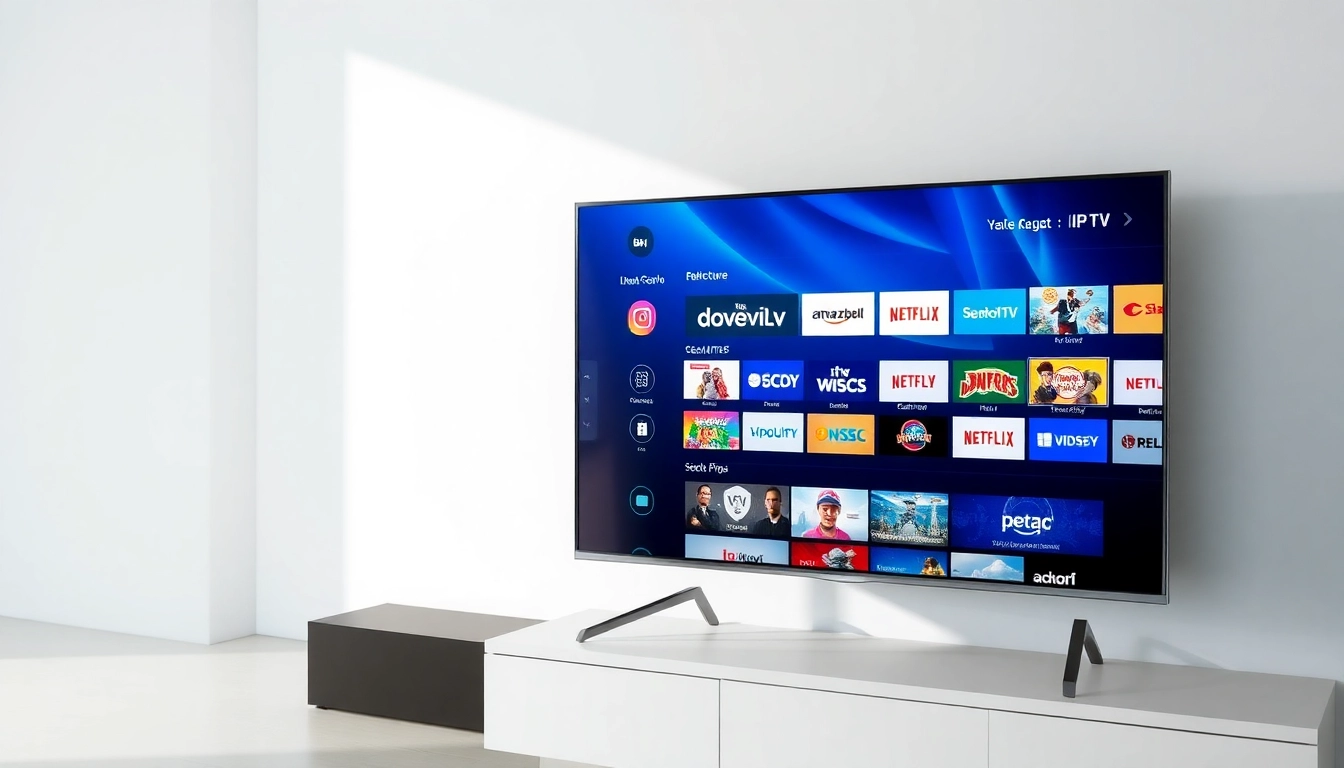Understanding the Essentials of Website Design
In today’s digital age, effective website design is crucial for establishing a brand’s online presence. A well-designed website not only attracts visitors but also retains them, turning casual browsers into loyal customers. This article delves deep into the various facets of website design, offering a comprehensive guide that covers the basics, necessary tools, current trends, best practices, and metrics for success.
The Basics of Website Design
At its core, website design entails the planning and creation of websites. It incorporates several disciplines, including web graphic design, interface design, and user experience design.
Website design is not merely about aesthetics; it encompasses the usability and functionality of a site. The layout, colors, fonts, images, and overall visual appeal are all crucial elements that contribute to the user’s experience. The goal is to create a website that communicates effectively with its audience, making information discovery intuitive and enjoyable.
Key Principles for Effective Website Design
To create a successful website design, it’s important to follow several key principles:
- Clarity: Clear communication is essential. Design should guide users effortlessly to the information they seek.
- Consistency: Keeping visual elements uniform across the site helps reinforce the brand identity and improves user familiarity.
- Responsive Design: Given the variety of devices used today, your website must adapt seamlessly to different screen sizes.
- User-Centered Design: Focus on the needs and behaviors of your users. Anticipating their needs can help create an intuitive experience.
- Aesthetic-Usability Effect: Users oftentimes perceive aesthetically pleasing design as more usable. Prioritizing visual appeal can enhance user expectations.
Importance of User Experience in Website Design
User experience (UX) entails every aspect of the user’s interaction with the website, from the initial visit to navigation and functionality. A positive UX can enhance customer satisfaction and loyalty. Key components impacting UX include:
- Navigation: Ensure users can intuitively move through your site with easily identifiable menus and a logical layout.
- Load Times: Fast loading speeds are essential; slow websites lead to a frustrating experience and can cause users to abandon your site.
- Accessibility: Your website should be usable for everyone, including those with disabilities. Alt text for images and keyboard navigability are examples of accessibility improvements.
- Content Quality: Well-written, informative, and engaging content keeps users on your website longer.
Website Design Tools and Technologies
Employing the right tools is essential to streamline the website design process. Many software solutions and platforms are available today, catering to various aspects of design and functionality.
Popular Software for Website Design
Several tools are popular among web designers due to their functionalities and ease of use:
- Adobe Creative Suite: A collection of graphic design software perfect for creating web graphics and layouts.
- Sketch: A preferred design tool for user interface and user experience design.
- Figma: A web-based interface design tool that promotes collaboration among teams.
- WordPress: A content management system (CMS) that offers flexibility for both coding and non-coding users to design and manage websites.
Emerging Technologies in Website Design
Technology in web design is constantly evolving, with several emerging practices shaping the future:
- Artificial Intelligence: AI can streamline design processes, automate repetitive tasks, and offer personalized experiences to users. For example, AI tools can help analyze user behavior patterns to optimize interface layouts.
- Augmented Reality (AR): AR can transform online shopping experiences by allowing users to visualize products in their own space via their devices.
- Voice User Interface (VUI): With the rise of voice-activated devices, integrating VUI can enhance accessibility and user experience.
Choosing the Right Platform for Your Website Design
The choice of development platform can significantly affect website performance. Some factors to consider include:
- Intended Purpose: Identify if your website needs to be an informational platform, e-commerce site, or something else entirely.
- User Experience: Prioritize platforms that offer intuitive design solutions and strong community support for troubleshooting.
- SEO Capabilities: Opt for platforms with built-in SEO tools to ensure that your website reaches its target audience effectively.
Design Trends to Watch in Website Design
Staying updated on design trends is critical for maintaining a modern and effective website. Below are some current trends shaping today’s website designs:
Modern Aesthetics: Minimalism and Beyond
Minimalist design focuses on the essentials. This approach eliminates unnecessary elements, allowing users to focus on content and functionality. The benefits of minimalism include:
- Improved Loading Times: Fewer elements can result in faster-loading pages, enhancing user experience.
- Ease of Navigation: A clear focus on key elements helps guide user attention to call-to-action (CTA) buttons and important information.
- Accessibility: Reducing clutter ensures a more straightforward navigation path, making it easier for all users to engage with the site.
Responsive Design Techniques for Mobile Users
With mobile internet usage skyrocketing, responsive design has become a necessity. This technique allows your website to adapt visually to various screen sizes and orientations. Designing responsively ensures that:
- Access Anywhere: Users can access your website on desktop, tablet, or mobile without losing functionality and usability.
- Improved SEO: Search engines prioritize mobile-friendly websites in rankings, making responsiveness vital for visibility.
- Consistent Experiences: Maintain brand consistency and visual integrity across devices.
Integrating Video and Animation in Website Design
Video content and animations can captivate visitors and enhance storytelling. Here’s how to maximize their use effectively:
- Enhanced Engagement: Video backgrounds or header animations can capture attention immediately.
- Improved Communication: Videos can demonstrate a product or service in action, communicating value efficiently.
- User Retention: Interactive animations can keep users engaged longer, which can reduce bounce rates.
Best Practices for Website Design Projects
To ensure a successful website design project, follow these best practices through each project phase:
Steps for Planning Your Website Design
The planning phase is foundational for a successful website. Here are actionable steps to consider:
- Define Objectives: Determine what you want your website to achieve; these goals will shape every design decision.
- Research Audience: Understand who your target audience is. Collect data on their preferences and needs.
- Create a Site Map: Draft a blueprint of your website to outline its structure and navigation.
- Wireframe: Create wireframes for key pages to visualize layouts before diving into design.
- Choose Branding Elements: Ensure consistency in logo, color scheme, and typography to reflect your brand identity.
Collaboration Tips for Website Design Teams
Effective collaboration is key in a team setting. Utilize these tips to streamline teamwork:
- Establish Clear Roles: Assign tasks based on team members’ strengths to improve productivity and accountability.
- Use Collaboration Tools: Adopt tools that facilitate seamless communication, file sharing, and project management.
- Regular Meetings: Schedule consistent check-ins to monitor progress and address any challenges promptly.
- Feedback Loop: Encourage constructive feedback throughout the design process to adapt and improve designs based on insights.
Testing and Iterating Your Website Design
Testing is an essential phase to refine your website. Here are crucial practices:
- User Testing: Invite real users to navigate the site. Observe their interactions and gather feedback for refinements.
- A/B Testing: Test different versions of pages to see which elements yield better results.
- Analyze Metrics: Utilize analytics tools to assess user behavior, engagement rates, and conversion rates.
- Iterative Design: Embrace continuous improvement. Use insights from testing to implement changes and enhance user experiences regularly.
Measuring the Success of Your Website Design
Determining the effectiveness of your website design relies on several key performance indicators (KPIs) that ultimately measure success:
Key Performance Indicators in Website Design
Tracking specific KPIs can help establish whether your site meets its objectives. Important metrics include:
- Traffic: Monitor the number of visitors to gauge the effectiveness of your marketing efforts.
- Bounce Rate: A high bounce rate might indicate that visitors are not finding what they are looking for.
- Conversion Rate: Track how many visitors complete desired actions on your website, such as signing up for a newsletter or making a purchase.
- Average Session Duration: Measuring how long users spend on your site can provide insights into engagement levels.
Collecting User Feedback for Continuous Improvement
User feedback serves as a valuable resource for enhancing website design. Here’s how to effectively gather feedback:
- Surveys and Polls: Utilize tools to solicit user opinions and experiences with your website.
- Feedback Widgets: Embed widgets that allow for on-the-fly feedback without disrupting user experience.
- Usability Testing: Conduct regular usability tests to identify challenges faced by users.
Case Studies: Successful Website Design Examples
Examining case studies of successful website designs can provide lessons and benchmarks. Analyze elements such as :
- Unique Selling Proposition: Understand how effective messages are presented to engage users.
- Innovative Design Approaches: Look at creative solutions to design challenges.
- User Engagement Strategies: Observe how certain features keep users engaged and returning to the site.
In conclusion, website design is a complex yet rewarding endeavor. By understanding the essentials, leveraging the right tools, staying current with trends, implementing best practices, and measuring success, designers can create websites that not only look good but also function effectively. Through continuous improvement, website design can evolve to meet the ever-changing needs of users, thus creating a lasting impact in the digital landscape.



